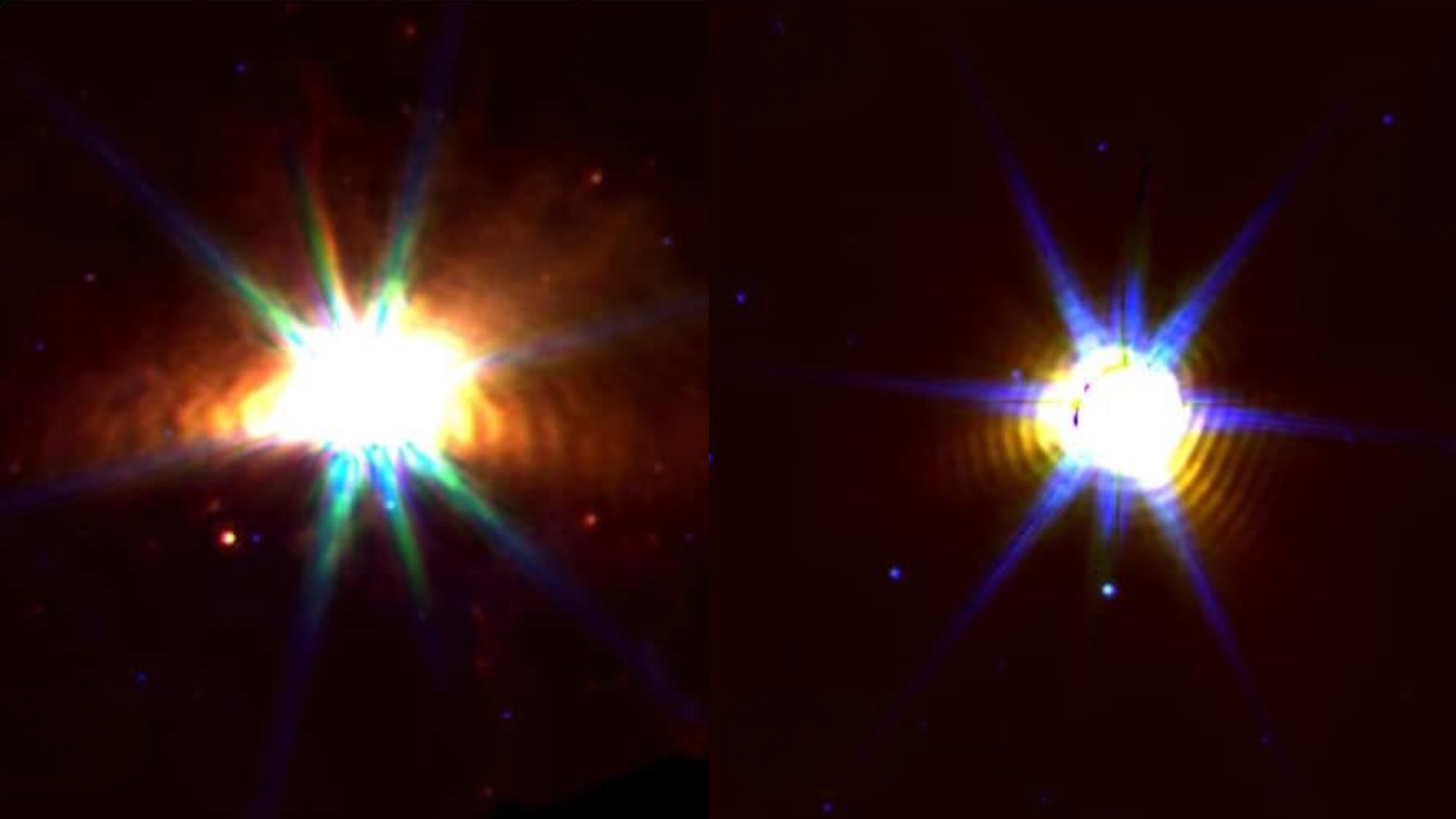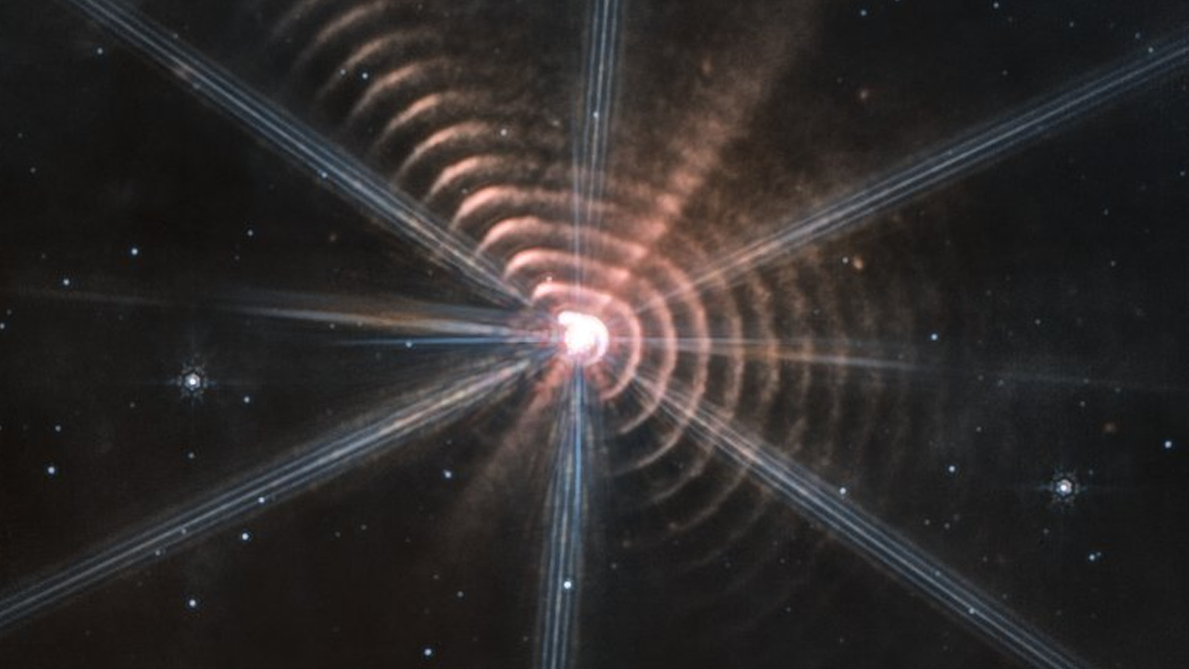
Astronomers have used the James Webb Space Telescope (JWST) to study the dusty shrouds that envelope dying stars.
The investigation could help reveal where vast amounts of cosmic dust come from before they go on to form the building blocks of new stars.
The stars investigated by this team of researchers are aging stellar bodies known as Wolf-Rayet stars. These massive stars have burned through their hydrogen and are on the verge of supernova explosions that will disperse the elements forged within them throughout the cosmos. These elements are eventually incorporated into new stars, meaning Wolf-Rayet stars represent a key stage in the cycle of stellar life and death.
"Wolf-Rayet stars are essentially highly evolved massive stars that don't show hydrogen at all," team leader and Embry‑Riddle Aeronautical University professor Noel Richardson said in a statement. "They've lost their hydrogen in the outer part of the star, fusing helium in their core, which means they are nearing the end of their life cycle."
As Wolf-Rayet stars die, they emit powerful stellar winds that, in the presence of another nearby massive star, condense to form shells of carbon dust.
However, until now, these shells had only been observed around the Wolf-Rayet star WR-140.

Richardson and colleagues set about observing four other Wolf-Rayet star systems, around each of which they found several dust shells similar to that of WR-140.
"Not only did we find that the dust in these systems is long-lived and making its way out into space, we discovered this is not unique to just one system," Richardson said.
Expanding observations of Wolf-Rayet stars to five systems rather than just one is an important step in understanding these aging stars.
"It confirmed that we are seeing the same pattern of surviving dust shells that we did around WR-140 in other systems," team member and NOIRLab astronomer Ryan Lau said. "These observations show that the dust produced by Wolf-Rayet stars can survive the harsh stellar environment."
The fact that this carbon dust can potentially survive for centuries could change how we think about the building blocks of new stars.
"Where does this dust go?" Lau asked. "We want to learn what exactly the chemistry of this dust is. To do that, we need to take spectra to identify specific grain composition — the physical properties — to get an idea of the chemical contribution to the interstellar medium."
The team's research was published on Monday (July 7) in The Astrophysical Journal.







